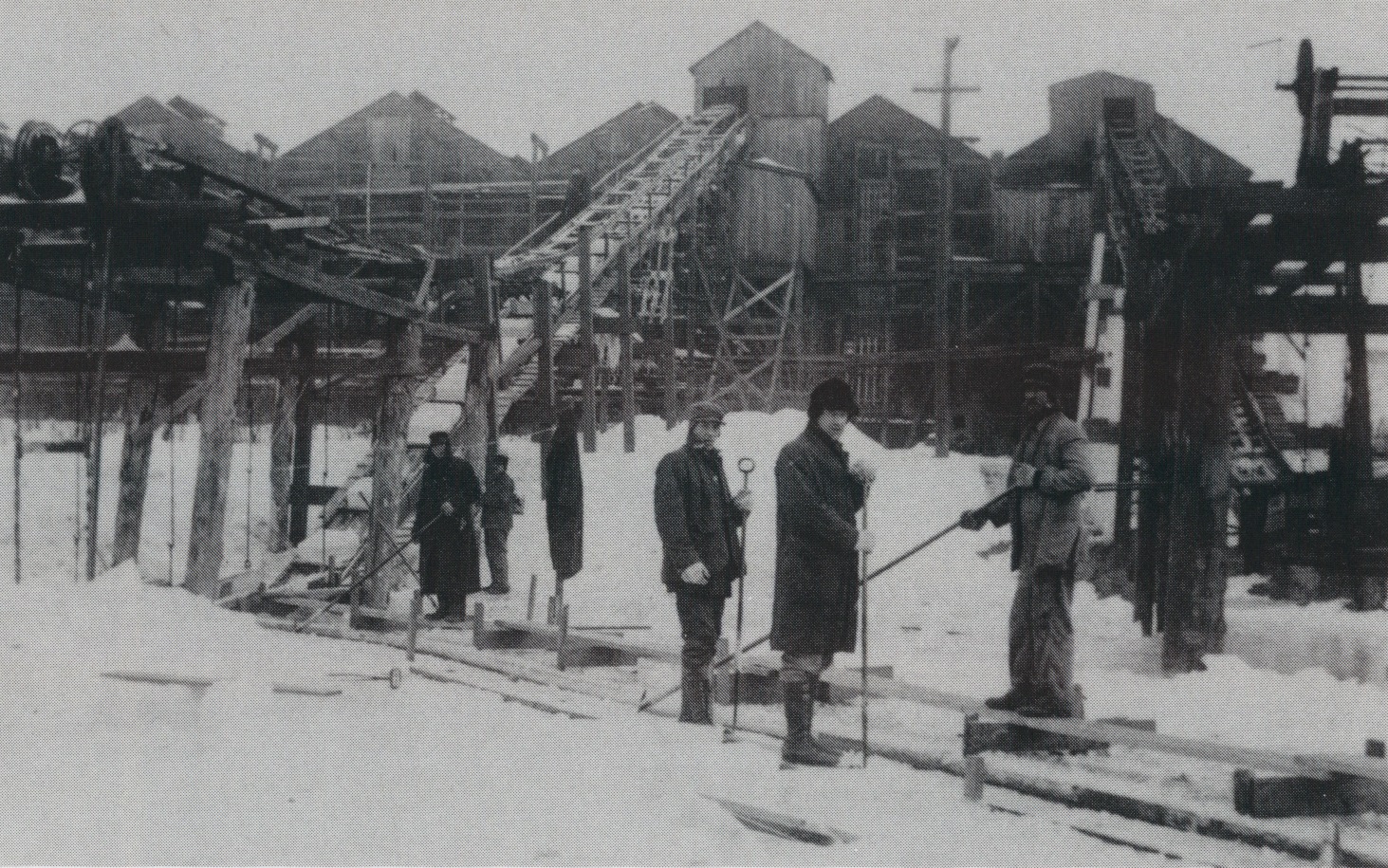This is a reprint of a “From the Local History Room” column that first appeared in Jan. 2014, before the launch of this weblog.
For an older generation, the cold and ice of winter can bring to mind a long-defunct industry that once employed hundreds of men in Pekin – the ice industry.
In the days before the invention of the refrigerator, families and business used iceboxes to store food for long periods of time or to keep food from spoiling too quickly. As “Pekin: A Pictorial History” says on page 100:
“Before refrigeration, kitchens were equipped with ice boxes and customers put signs in their windows with either a ‘25’ or ‘50’ facing up to indicate how many pounds of ice they needed that day. The old icebox of treasured memory was an oak affair with fancy doors and sturdy handles that would be appropriate on a ship.
“Sometimes, to save money, men would stop at the icehouse on the way home from work. They would carry a block of ice home on the front bumpers of their cars, which were ‘square and sturdy and commodious.’ During the very hottest summers, as in 1936, ice did not last long even in the insulated icebox. Alternately, housewives in the winter would use a window box utilizing outside air for cooling and freezing. It was a tin compartment that clamped into a kitchen window. Unfortunately, more often than not, the milk in the tin box next morning was frozen.”
The same book also tells on the same page of how businesses formerly made use of ice:
“In earlier days trains did not have refrigerated cars so everything sent to New York City and eastern markets – such as dairy and meat products from the local hog and cattle industry as well as catfish, bullhead and carp from the Illinois River – had to be iced down.”
To supply ice for the iceboxes, men during the winter months would cut and “harvest” ice from nearby rivers and lakes. That ice would then be stored in icehouses, and blocks of ice would be delivered from the icehouses to homes and businesses during warmer months of the year.
In those days, Pekin was actually one of the major suppliers of ice for areas to the south, particularly for St. Louis. As the 1974 Pekin Sesquicentennial, page 58-59, says:
“. . . the ice was shipped down the river on large barges. Pekin Lake’s shore was literally lined with ice houses, built along Gravel Ridge. They were huge affairs, capable of holding some 20,000 tons each. All were owned by the W. A. Boley Company, Inc., who had purchased the business from John Lowry in 1866.”
William A. Boley, of Pennsylvania German descent, had come to Pekin in 1860. In 1873, his company bought Pekin Lake for $5,000, holding exclusive rights to the Illinois River backwater until the early 1950s – but by then, all of the old Boley ice houses had been burned down long before.


The other major ice company in Pekin was the Grant Brothers ice house on Bailey’s Lake (today known as Lake Arlann and Meyers Lake). There used to be a switch track that transported ice from the lake to the former New York Central Railroad. Says the 1974 Sesquicentennial:
“During the height of the season, it is reported that the Grant Company employed as many as 300 men to cut and load the ice. As many as five box cars per day were loaded by hand, and the cakes of ice weighed as much as 170 pounds each.
“Ice could be stored for as long as two years, through a process which involved packing the frozen water in straw and sawdust. When ice was taken from the storage houses for delivery to homes and businesses in the summer months, it had to be sawed and chiseled into 25, 50, and 100 pound cakes. Customers would have a card in their front window, indicating to the delivery man how much, if any, ice was needed. Children used to follow the ice man around as if he were the Pied Piper, hoping to catch him in a generous mood and have him give them a small piece; it may have been a far cry from air conditioning, but it was a great way to cool off on a hot day before 1930.”











